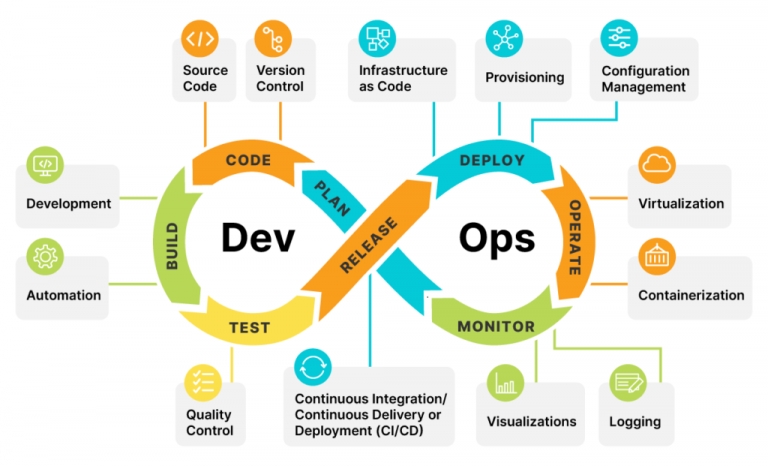#devops

What is DevOps?
DevOps is a methodology that combines software development and IT operations to increase the speed and efficiency of software delivery while maintaining high quality. It emphasizes collaboration, communication, and automation between development and operations teams, with the goal of delivering software changes more frequently, reliably, and with higher quality.
DevOps is not a specific tool or technology, but rather a culture and set of practices that enable teams to work together more effectively. It involves continuous integration, continuous delivery, and continuous deployment, with an emphasis on automating repetitive tasks and eliminating manual processes.
Some of the benefits of DevOps include faster time-to-market, increased agility, improved collaboration and communication, better quality and reliability of software, and improved customer satisfaction. By breaking down silos between development and operations teams and adopting a culture of collaboration and continuous improvement, organizations can achieve better outcomes and deliver more value to their customers.
What is Automation, Scaling, and Infrastructure

Automation, scaling, and infrastructure are all key components of DevOps.
Automation: Automation involves using tools and scripts to automate repetitive tasks and eliminate manual processes. This can include automating builds, testing, and deployment processes, as well as infrastructure management tasks like provisioning servers and configuring networking.
Scaling: Scaling involves the ability to increase or decrease the resources dedicated to an application or system in response to changing demand. This can include scaling up to handle increased traffic or scaling down to save costs when demand is low. In the context of DevOps, scaling is often achieved through the use of cloud computing services like AWS, Azure, or Google Cloud Platform, which allow for flexible and elastic infrastructure provisioning.
Infrastructure:

Infrastructure refers to the underlying technology components that support an application or system, including servers, networking, storage, and databases. In a DevOps context, infrastructure is typically managed using code, allowing for the automation of infrastructure provisioning, configuration, and management. Infrastructure as Code (IaC) tools like Terraform, CloudFormation, and Ansible are commonly used to manage infrastructure as code, allowing for repeatability, consistency, and scalability of infrastructure management.
This is done with the help of certain tools or programs which can help to carry out the tasks automatically! Some of the leading IAC tools are listed below.
Ansible
Terraform
SaltStack
CloudFormation
Azure Resource Manager
SpectralOps
By combining automation, scaling, and infrastructure management practices, DevOps enables teams to deliver software changes more quickly, reliably, and at scale, while maintaining high quality and reducing the risk of errors or downtime.
When infrastructure is properly managed, it makes sure that the resources are configured properly, secured, backed up on a regular basis, and monitored from time to time.
Why DevOps is Important?

1. Shorter Development Cycles
Companies succeed due to their ability to innovate faster than their competitors. The main objectives of DevOps are automation, continuous delivery, and a quick feedback cycle. Due to quick and continuous feedback, the majority of the errors are fixed in time which helps in achieving faster releases. A combination of development and operations efforts in DevOps lead to quick development and release of applications in the market.
2. Early Detection of Errors
The collaborative nature of the DevOps model facilitates a culture of knowledge sharing across the teams. The continuous monitoring and testing of the code improve the overall build quality of the application. As teams are empowered to share their feedback with others, defects are detected and resolved early in the development process.
3. Continuous Release and Deployment
The Development and Operations teams can develop and integrate code instantly with the help of an automated CI and CD pipeline. Overall, DevOps facilitates continuous release and deployment with better quality and efficiency.
4. Better Communication Between Teams
DevOps improves business agility by providing an atmosphere of mutual collaboration, effective communication, and integration across all the global teams in an IT organization.
5. Reduced Implementation Failure
As DevOps promotes frequent code versions, it is easy to detect code defects. Also, recovery is much faster when both the development teams and operation teams work together taking into account the challenges of both teams during development.
6. Reduced General Costs
All the benefits of DevOps listed above result in reduced general costs and requirements of IT staff.
7. Innovative Mindset
There is huge scope to bring an innovative approach in resolving key issues.
8. Greater Customer Satisfaction
organizations can improve their deployment frequency by two hundred times with DevOps and reduce change failure rates by three times.
Thank you for reading this Blog. Hope you learned something new today! If you found this blog helpful, please like, share, and follow me for more blog posts like this in the future.
I would like to connect with you at https://www.linkedin.com/in/madhuri-patil-278b19118
